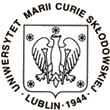

 |
 |
 |
|
Artur Dobrowolski
UMCS, Lublin Fusion barriers and cross-sections in semi-classical Extended Thomas-Fermi ApproximationThe knowledge of the collective potentials between two colliding ions is absolutely crucial for the synthesis of new isotopes. This problem has been the subject of a very active research over the last decade and remains one of the most intensively studied subjects in low-energy nuclear physics in particular in the perspective of the synthesis of super-heavy elements as well as of exotic nuclei far away from $\beta$-stability line. The research concerning the interaction potential between colliding ions goes back to the work of R. Bass. Since the idea of a proximity potential due to W.J. \'Swi\k{a}tecki and coworkers in the 70's many improvements have been proposed to make this phenomenological approach more realistic and general. In this work fusion barriers for spherical nucleii are determined in the framework of the Skyrme energy-density functional together with the semi-classical approach known as the Extended Thomas-Fermi method. The fusion barriers obtained in this way with the Skyrme interaction SkM* turn out to be close to those generated by phenomenological models like those using the proximity potentials. It is also shown that the location and the structure of the fusion barrier in the vicinity of its maximum and beyond can be quite accuratelly described by a simple analytical form depending only on the masses and the relative isospin of target and projectile nucleus. Finally, on the base of this phenomenological potential $V_{12}(r)$ the cross-sections for fusion reactions are calculated
| ||
Last modificated: 2003-09-22

